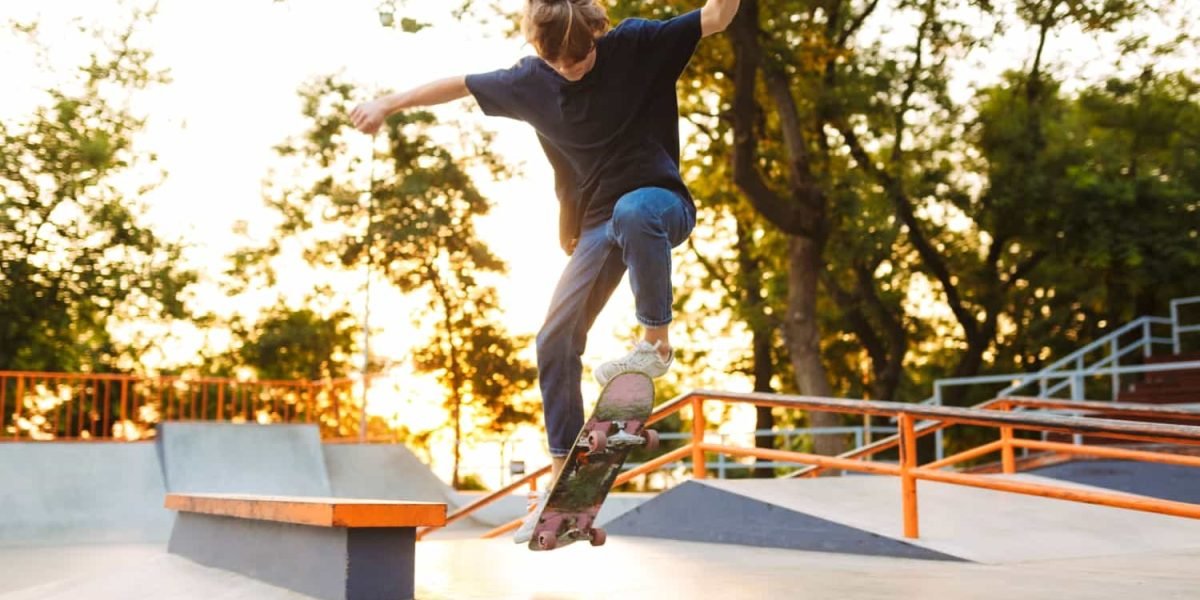
The rhythmic sound of wheels against concrete, the graceful flow of riders navigating urban spaces – skateboarding has long been an art form that transforms cities into playgrounds of possibility. However, in recent years, many skateboarders have encountered an increasing challenge: hostile architecture specifically designed to prevent skateboarding in public spaces.
From Metal to Mindset: Understanding Anti-Skate Architecture
You’ve probably seen them – those metal knobs attached to ledges, rough textured surfaces added to smooth walls, or decorative barriers installed on previously perfect grinding spots. These aren’t random architectural choices; they’re deliberate installations meant to deter skateboarding. Cities and property owners invest thousands of dollars in these “defensive design” elements, claiming they protect property and prevent liability issues.
But what they’re really doing is stifling a vibrant part of urban culture. Those metal clips and studs aren’t just blocking tricks – they’re blocking opportunities for young people to engage with their environment in creative, athletic ways. The same ledge that could teach a beginner their first boardslide is now unusable, forcing skaters to seek out increasingly remote or potentially dangerous locations to practice.
The Real Cost of Defensive Design
When cities implement anti-skate measures, they often overlook the broader implications:
Reduced Access to Safe Practice Spaces: Beginner skaters especially need smooth, well-lit areas to learn fundamentals. When these spaces are rendered unusable, newcomers to the sport face additional barriers to entry.
Community Displacement: Skateboarding spots often become natural gathering places where riders share tips, film clips, and build friendships. Hostile architecture disperses these organic communities, pushing skaters to the margins of urban spaces.
Lost Economic Opportunities: Areas popular with skateboarders often attract foot traffic, supporting local businesses and creating vibrant street life. When these spaces become unwelcoming, that economic energy goes elsewhere.
The Innovation Response
But skaters are nothing if not resourceful. The rise of hostile architecture has sparked incredible creativity within the skateboarding community. We’re seeing:
Mobile Skate Spots: Pop-up ramps and temporary setups that transform unused parking lots into skate spaces
DIY Builds: Community-led projects creating skateable art installations in permitted areas
Advocacy Groups: Organized efforts to work with city planners on skate-friendly urban design
Building Better Solutions
At [Your Skate School Name], we believe in working toward positive solutions. Rather than accepting the exclusion of skateboarders from public spaces, we’re advocating for:
Designated Skate Zones: Working with city planners to incorporate skateable elements into new developments
Education Programs: Teaching proper skate etiquette and space sharing to build better relationships with property owners
Community Engagement: Involving skateboarders in discussions about urban planning and public space use
The Future of Urban Skating
The reality is that skateboarding isn’t going anywhere – it’s only growing in popularity, especially since its debut as an Olympic sport. Cities need to recognize that hostile architecture isn’t a solution; it’s merely pushing an integral part of urban culture into the shadows.
Instead, we need to work toward integration. Some forward-thinking cities are already incorporating “skate-friendly” zones into their urban planning, creating spaces that work for everyone. These areas feature durable materials that can withstand skating while maintaining aesthetic appeal, and they often become vibrant community hubs.
Taking Action
If you’re frustrated by hostile architecture in your area, there are constructive ways to respond:
Join local planning meetings to voice your perspective
Document the positive impact of skateboarding in your community
Support businesses and property owners who maintain skate-friendly spaces
Participate in organized advocacy efforts for better urban design
Remember, every great skater started somewhere – usually on a simple ledge or smooth piece of concrete. By working together to preserve and create skateable spaces, we ensure that future generations will have the same opportunities to discover the joy of skating.
At [Your Skate School Name], we’re committed to not just teaching skateboarding, but to fostering an environment where it can thrive. Through education, advocacy, and community building, we’re working to create a future where hostile architecture becomes a relic of the past, replaced by inclusive design that celebrates rather than stifles the creative spirit of skateboarding.
Want to be part of the solution? Join us for lessons where we’ll not only teach you to skate but also how to be a positive ambassador for the sport. Together, we can push back against hostile architecture and push forward toward better cities for everyone.